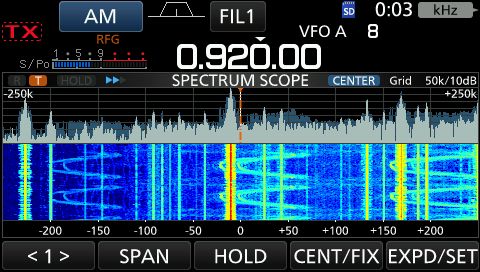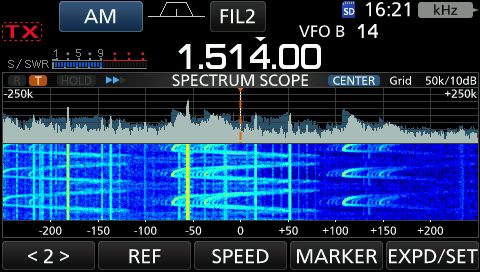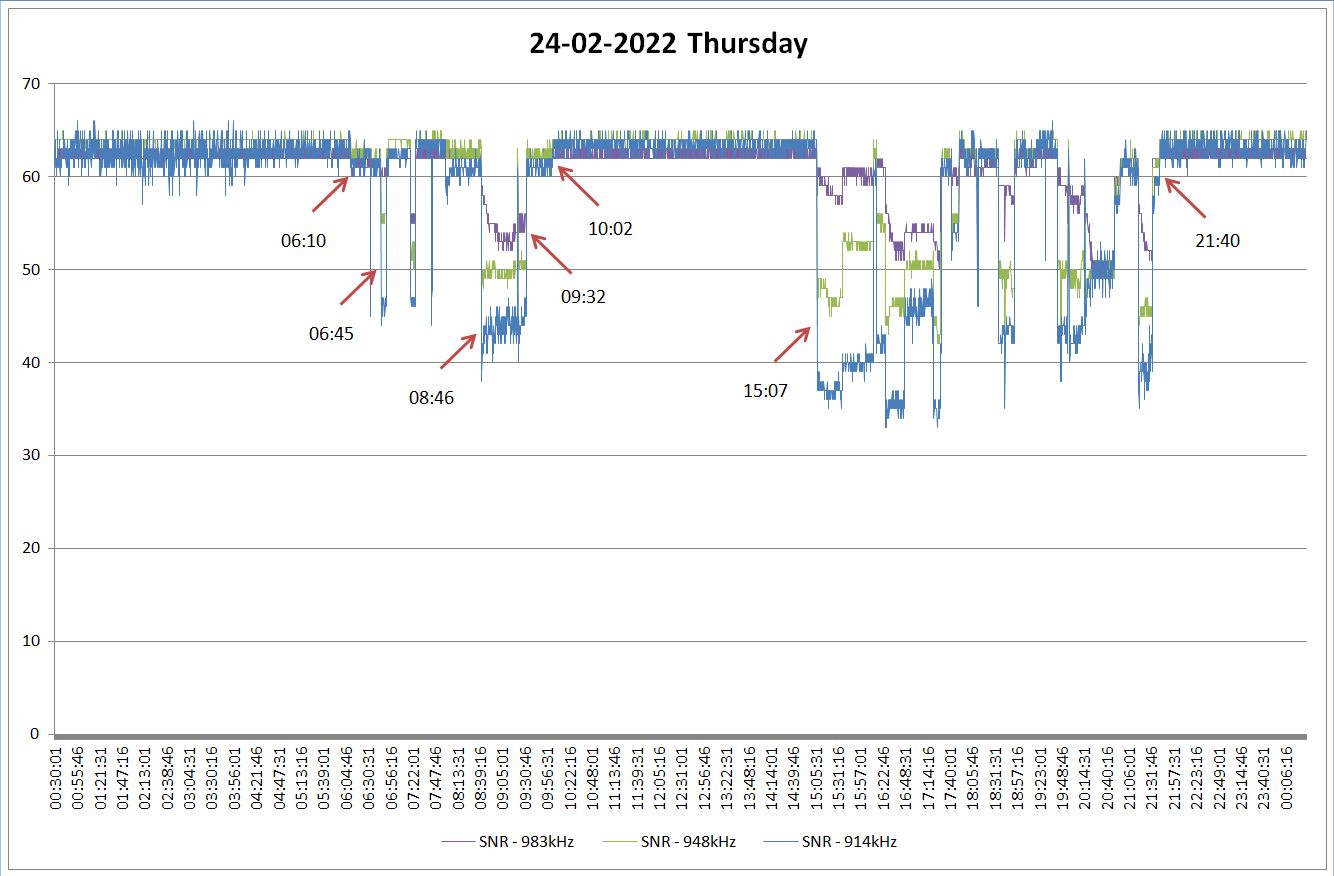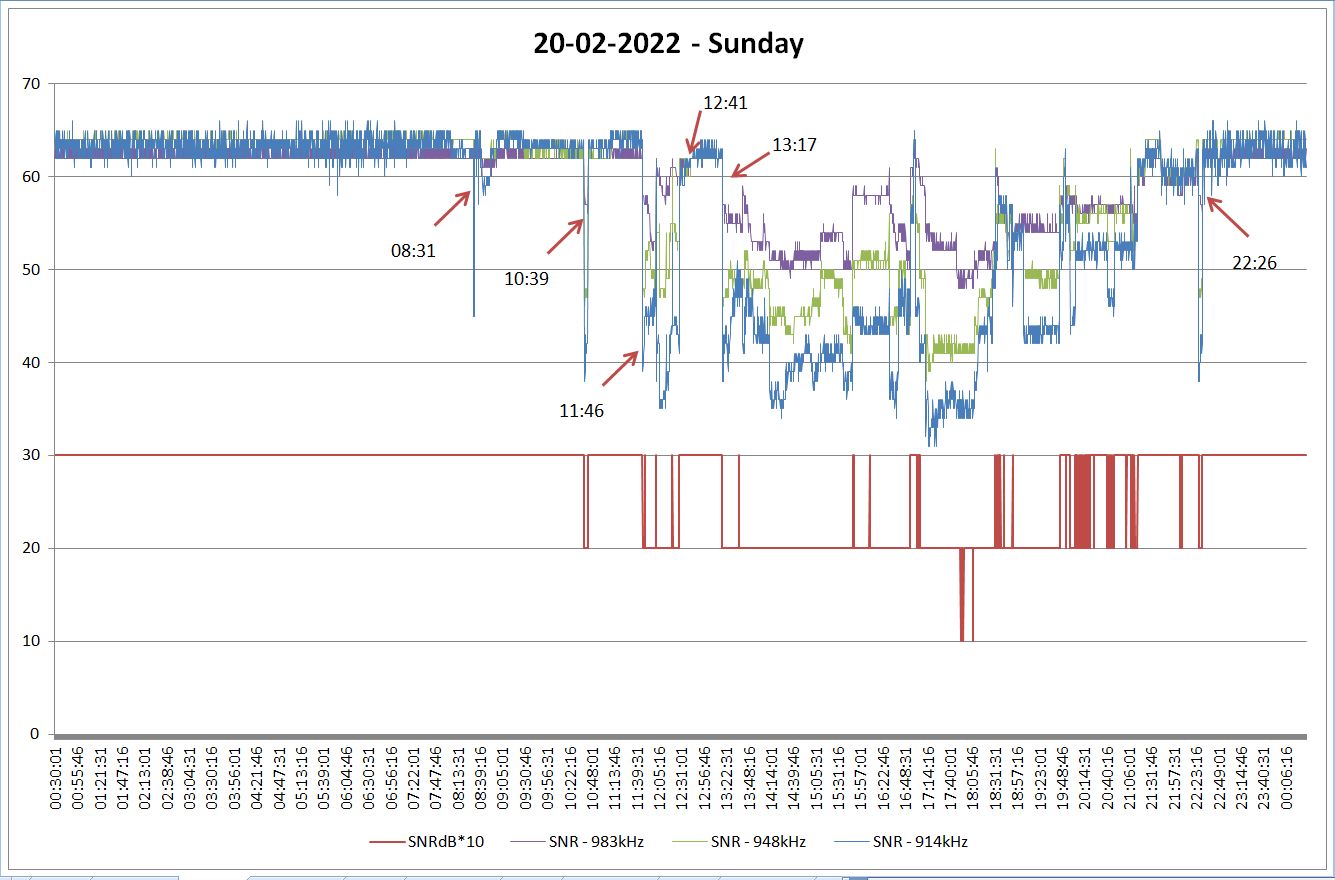Hunting Electrical Noise Sources - III
22 Feb 2022 - Jim Evans, G3VDB
Here, I continue my description of the PLT-like noise source that affects my radio reception and internet router. The initial description of the source is at 2022-02-18-Hunting-Electrical-Noise-Sources-II. The first article in the series describes a different noise source and is at 2022-01-04-Hunting-Electrical-Noise-Sources-I.
This noise source uses a multiple-carrier frequency-modulated protocol that can be heard and / or seen on a medium wave radio tuned to 930, 1450 or 1640kHz. On a receiver with a waterfall or spectrum display the carrier spacing of about 200kHz is visible with a frequency shift of around 180kHz.
I left several questions to answer.
- What is this device?
- Where is this device?
- Exactly what times are the interference to the VDSL line occurring?
- How does the interference get into my Router?
- Direct RF pick up?
- via the Mains supply?
- Cross talk on the telephone pairs?
Where is this device?
When active, the source can be heard with a medium wave radio as a loud 100Hz buzz on several frequencies. Such portable radios use a ferrite rod aerial. This has a deep reception null in line with the rod. By the simple process of walking around the area, maximising the signal strength and then determining the direction of minimum strength, I have localised the source to one property about 50m from mine. As these are not immediate neighbours, and we do not know each other, I have not, as yet, pursued with them the question of this radiation from their property.
What is this device?
That is best determined by approaching the property owner. It can wait. A quick internet search has not turned up any device that openly operates on these frequencies. Standardised PLT devices do not operate below 1.8MHz.
When does the interference occur?
It has been a long time since I first tried to narrow down when this interference happens on my ADSL link. Many routers could provide that information directly through a management / command line interface (CLI) via Telnet. AVM removed their Telnet option from the Fritz!Box OS some time ago.
AVM provides an option to retrieve statistics to a file for submission to AVM support but the format of that file was not immediately obvious to me. Neither was it clear if that file gave a snapshot of current performance or if a significant period of history was recorded therein.
AVM supports the TR-064 protocol with specific extensions for the powerful set of options that the Fritz!Box provides. Not knowing anything about the that protocol, it was not clear that this could help me. In researching the protocol I soon came across fritzconnection, a Python library to communicate with the AVM Fritz!Box using the TR-064 protocol. Experimenting with this library revealed that the Fritz!Box TR-064 command option ‘X_AVM-DE_GetDSLInfo’ in the ‘WANDSLInterfaceConfig’ group returned an array of 512 values of Signal to Noise ratio over the full VDSL spectrum range of 4096 bins or buckets. In a few hours, I had a stable Python program that would retrieve the values continuously and record them as a .CSV file. Those of immediate interest between ~875kHz (bin 25) and ~1000kHz (bin 30). With the flexibility of Python I could develop the program in Windows and run it later on a Raspberry Pi.
I now have statistics for the whole of the month of February 2022. I plot those for each day in Excel. The following are two typical graphs for a working weekday and a weekend saturday. In both cases, the SNR on all three bins (with centres approimately 914kHz, 948kHz, 983kHz ) is stable overnight, at the highest level (of 64 or so). Of the three bins, the change in SNR is always most marked in the lowest frequency bin and less evident in the highest.
On the typical weekday above, disturbance starts between 06:05 and 06:30. It continues usually to 08:30 or 08:45 with occasional extensions of varying length, (as here) into the main part of the morning. The SNR is often again stable until some time between 15:00 and 16:00. Various levels of disturbance are then observed into the evening, often stopping between 21:00 and 22:15, though on some occasions the disturbances have lasted into the following day. Extension into the following day is unusual during the working week.
How does the interference enter the router?
The interference could enter the router either via the telephone line or via the mains supply.
Entry via the telephone line is possible, though in my installation the line is underground except for the last 2m to 3m. The line has a common mode choke on it designed to stop RF getting into the router. However there is about 20m of internal house wiring on the analogue phone side which uses only the filtering provided by the supplier’s CPE termination [Openreach NTE 5C]. This wiring could act as an aerial (antenna). Equally the intrusion could be from cross-talk between adjacent pairs of the telephone wiring.
If the source is a Power Line Transmission device using mains wiring for its connection, then the mains route is possible particularly if the PSU of the router has little or no RF filtering. But as the PSU is a switched mode supply, one would expect it would be heavily filtered at radio frequencies otherwise it, itself, would radiate.
More tests are required to isolate the possible sources. A mains filter in series with the mains supply is a possible solution for mains borne interference. Supply the router from a 12V battery, temporarily will determine if the interference is mains borne. I shall attempt that an report the results separately.
One puzzling question is: “Why is the household that is generating this interference not experiencing a poor internet service?” Or are they?




